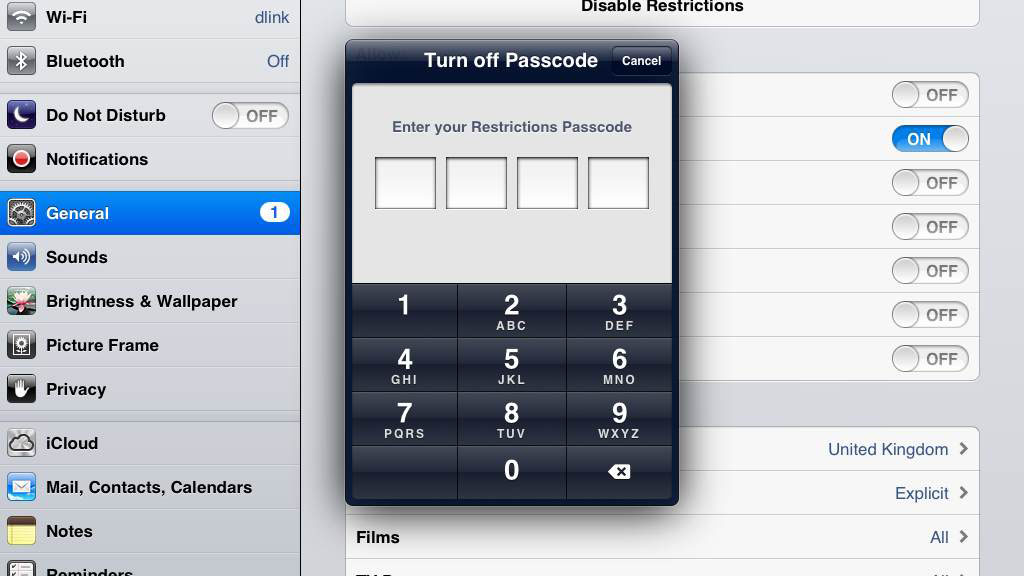
Child-bearing Apple iOS device owners do at least have one feature that they can proudly boast is better than their Android counterparts and that's the Restriction system that helps make your Apple iPad or iPhone kid friendly.
With internet access, iTunes accounts and chat support at the heart of Apple iOS, handing over a unfettered iPad or iPhone to a small person can be a scary proposition.
While Android lacks the absolute usefulness of a Restrictions style system, in many ways this is circumvented by the ability of apps to act as replacement Launchers to the Android Home Screen system. This effectively enables a child-safe sandbox from which they can't escape.
Apple doesn't enable this type of functionality in iOS. The Home button will always take you to the default Home Screen.
Depending on how you want to use your iPad or iPhone with your child this can make it less desirable or potentially even unsuitable.
You could argue that these aren't toys, you shouldn't be leaving them with very young children, which still won't stop some people needing or wanting to do just that. While you can leave toddlers with a drawing app, one press of the Home button and they'll be back to the Home Screen.
For even just slightly older children there's no reason you can't fill an iPod touch, iPad or iPhone with games, educational apps, books, films and just fun apps, so they can idle their time away. A locked-down system is web-safe, though access to settings can still cause some headaches.
Get daily insight, inspiration and deals in your inbox
Sign up for breaking news, reviews, opinion, top tech deals, and more.
Feeling restricted
iOS has a Restrictions system that locks down many of the risky features of your iPad or iPhone. It does this via a standard four-digit PIN, which you're asked to set when you first turn on Restrictions . This can be found via Settings > General > Restrictions.
In a way this PIN is its main weakness, while it does make it quick to use, children are wily, sponge-like machines and can quickly discover your PIN through observation and deduction. So be careful when tapping it in.
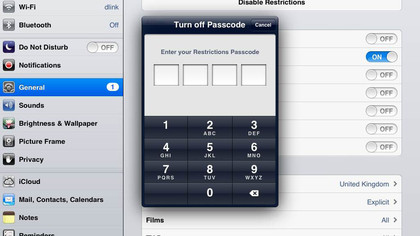
Lock down
Restrictions is split into a number of sections, the first deals with specific system apps and tools.
This contains some of the more important aspects that you'll want to lock down before your child uses the device. Including Sarari and its web access and Facetime for video chats.
Lastly, you'll probably want to block iTunes access and the ability to delete and install apps. We also suggest jumping ahead to the next section and disabling In-App purchases too, though these are still protected by your iTunes password.
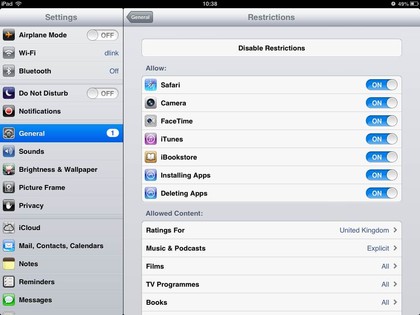
Those latter options probably depend on the age of your child and if this is their own device. For older children that you trust with installing and buying their own apps, an option is to use an iTunes allowance. For this to work you need your own iTunes account.
Go into iTunes and the iTunes store. On the right is a link to Buy iTunes Gifts where you'll find an allowance section. This enables you to create an account that is given from £5 to £30 per month to spend. Don't worry, once this is initially set up, you can then suspend the monthly payments or adjust it.
Too young
If you are giving your child more leeway, the next section offers the ability to filter the content they can browse and buy on the iTunes store via standard age restrictions. How these apply varies from category to category. Films and Apps offer a wide range of useful age-band options.
Music, Podcasts and Books simply provide an "Explicit" content filter, while TV adds a "Caution" flag, which is confusingly meaningless.
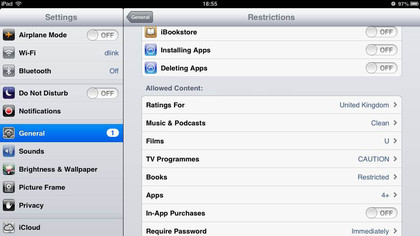
An important thing to note with these restrictions is that they only work if they've been applied to the media and also everything – no matter what its rating – is still browsable within the iTunes store. For films and apps this is often the case, but even with apps there's still potentially undesirable content as part of the app. So it's still wise to browse the iTunes store with your child.
Safe settings
The final section of Restrictions attempts to lock down further areas of iOS and external interaction. While you can't lock the settings generally - so for example it's not possible to lock wireless turned off - you can block changes to Accounts, Contact, Calendar, Reminder, Photos, Facebook and Twitter.
Usefully the Volume level can be locked and multi-player gaming can be blocked too. Return to the Home screen and you'll find iOS is now hiding anything it thinks doesn't meet your restrictions.
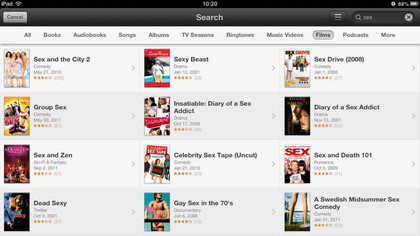
Safer browsing
It's a shame for an inquisitive mind to have to cut access to the internet entirely, but offering web access is a huge worry. How can you provide safe web access? We recommend Ranger Pro Safe Browser. It's free and quick to register the required web account, from which you can monitor and manage allowed web site content at mobsafety.com.
We're surprised at just how comprehensive, customisable and secure the system actually is. Nothing can be 100 percent foolproof, unless you only use whitelisted sites and block everything else, which is as an option with Ranger Browser.